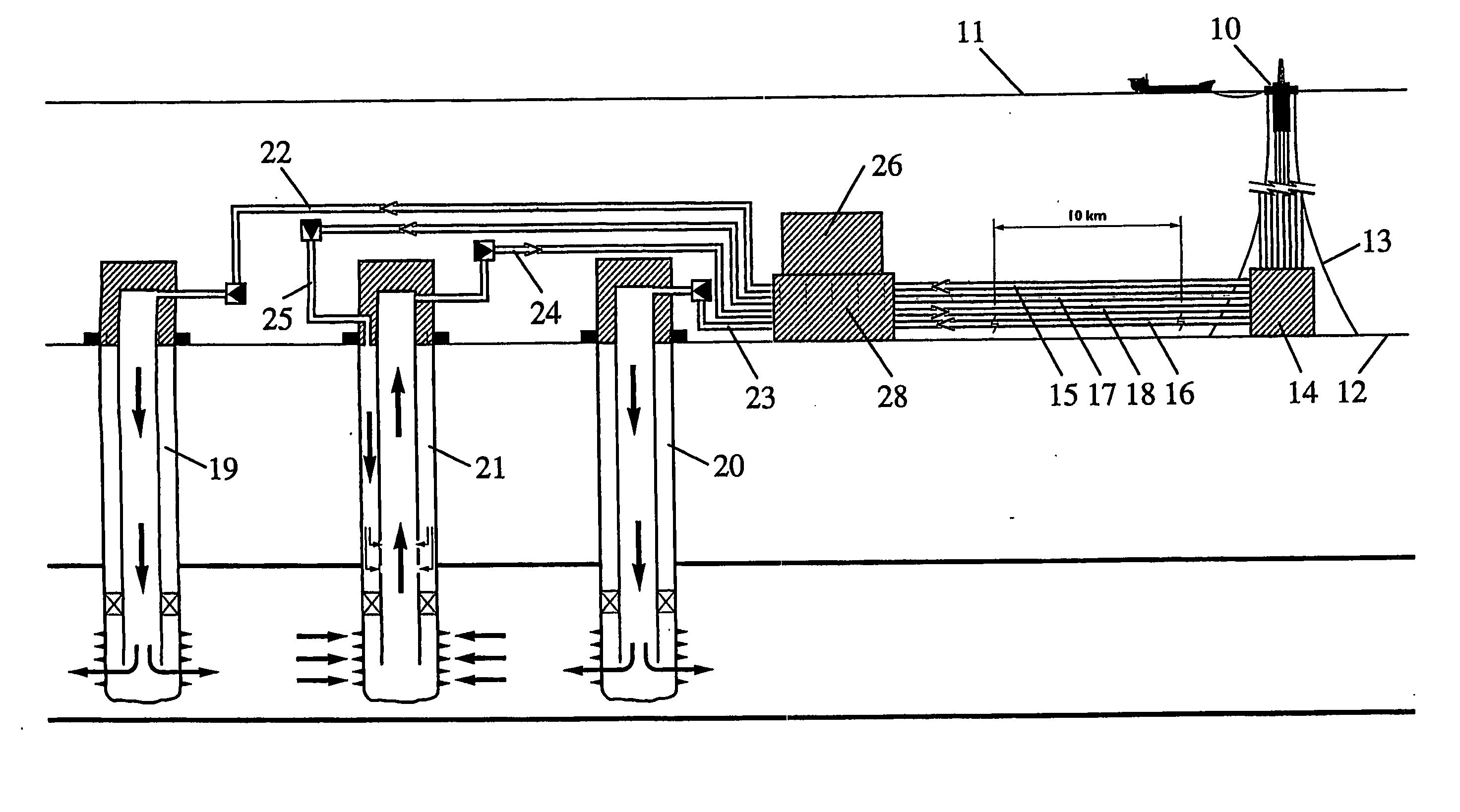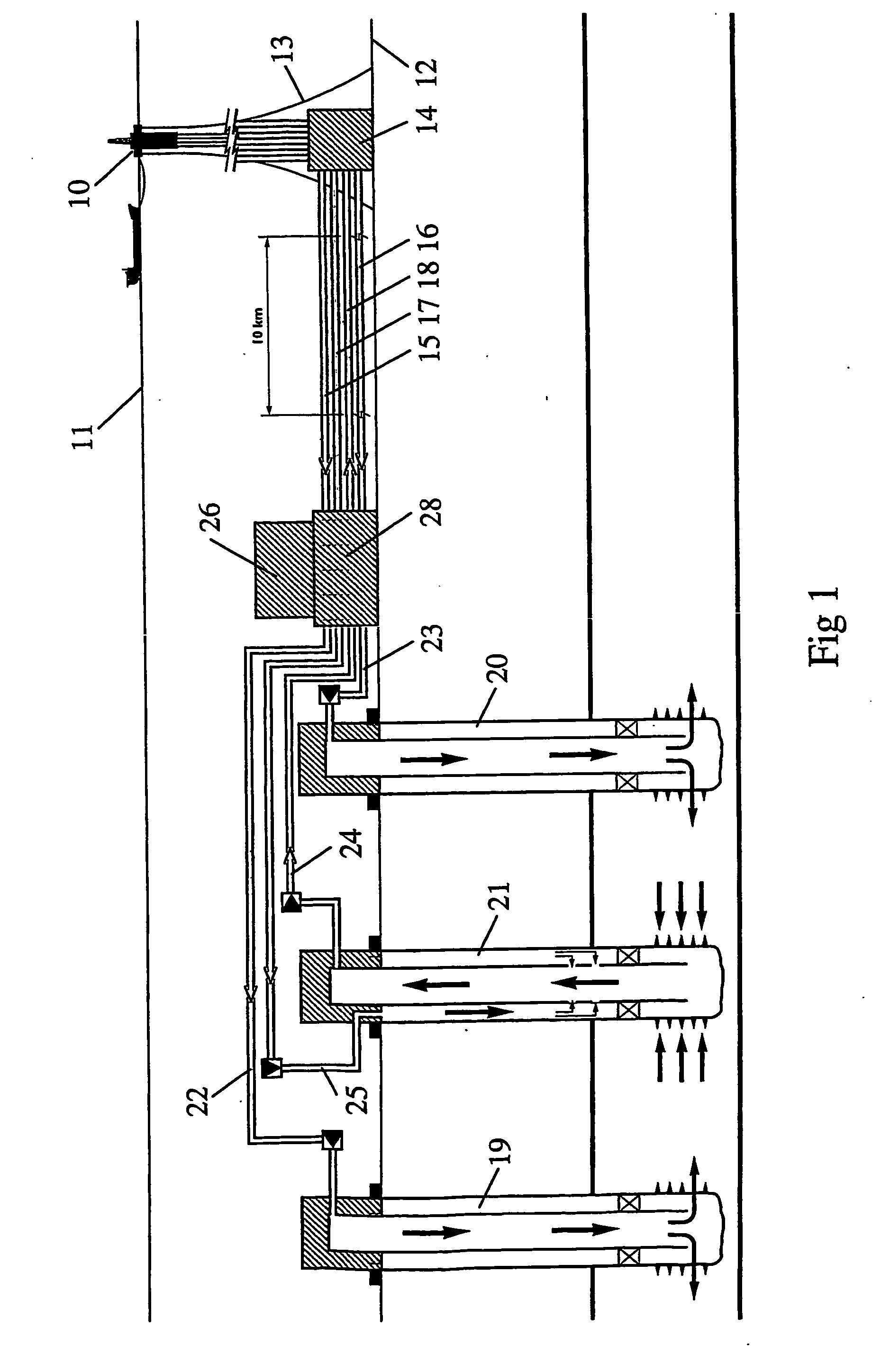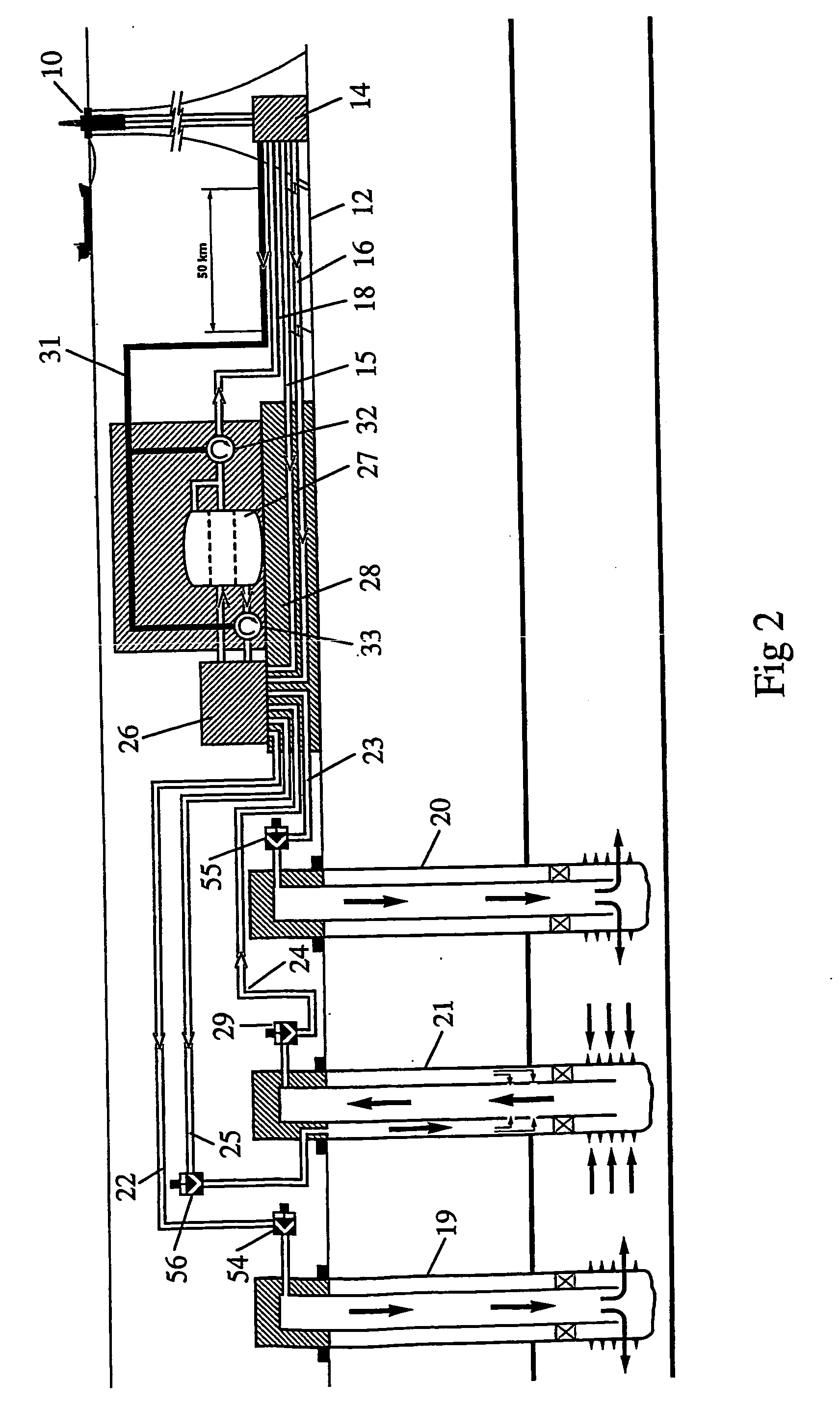Subsea process assembly
a technology of process assembly and subsea water, which is applied in the direction of separation process, wellbore/well accessories, liquid degasification, etc., can solve the problems of high field capital expenditure and operational expenditure, reducing the commercial ceiling at which the field can be operated viably, and no longer commercially viable to operate the well. achieve the effect of maximising the potential of this pressure differen
- Summary
- Abstract
- Description
- Claims
- Application Information
AI Technical Summary
Benefits of technology
Problems solved by technology
Method used
Image
Examples
Embodiment Construction
[0027] The present invention aims to overcome the problems described above.
[0028] According to the present invention, there is provided a subsea process assembly for separating a multiphase flow, the assembly comprising: [0029] an inlet for a multiphase medium; [0030] a pressure reducing means for reducing the pressure of the multiphase flow from the inlet and creating a source of energy; [0031] a multiphase separator for separating the multiphase input into individual phases; [0032] a pumping system for, in use, pumping at least one of the desired individual phases to a delivery point by utilising at least some of the energy from the source of energy.
[0033] The pumping may be powered by utilising a variable controllable amount of the energy from the source of energy.
[0034] Preferably, the pressure reducing means is coupled to a hydraulic power drive or alternatively to an electric power drive or a flow controller, such as a choke, depending on the optimum method whether hydrauli...
PUM
| Property | Measurement | Unit |
|---|---|---|
| pressure | aaaaa | aaaaa |
| depth | aaaaa | aaaaa |
| pressure | aaaaa | aaaaa |
Abstract
Description
Claims
Application Information
 Login to View More
Login to View More - R&D
- Intellectual Property
- Life Sciences
- Materials
- Tech Scout
- Unparalleled Data Quality
- Higher Quality Content
- 60% Fewer Hallucinations
Browse by: Latest US Patents, China's latest patents, Technical Efficacy Thesaurus, Application Domain, Technology Topic, Popular Technical Reports.
© 2025 PatSnap. All rights reserved.Legal|Privacy policy|Modern Slavery Act Transparency Statement|Sitemap|About US| Contact US: help@patsnap.com



